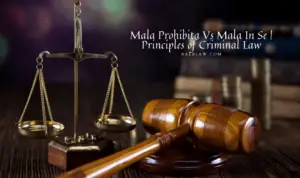What is concubinage in Philippine law?
The priest asks: Do you promise to be faithful to her in good times and in bad, in sickness and in health, to love her and to honor her all the days of your life?
The groom replies: I do.
Next, the Priest asks the bride: Do you promise to be faithful to him in good times and in bad, in sickness and in health, to love him and to honor him all the days of your life?
The bride replies: I do.
And they live happily, but not all have their ever after.
What if your expectations of happy endings shatter into bits and a slice of reality hits you that even marriage is meant to be broken by some—that the I DOs you have ever dreamed of became the I DON’Ts of your husband due to infidelity? Here are the things you need to know about Concubinage.
What is Concubinage in the Philippines?
Under Article 334 of the Revised Penal Code, Concubinage is committed by a married husband by (a) keeping a mistress in the conjugal dwelling; (b) having sexual intercourse under scandalous circumstances with a woman who is not his wife; or (c) cohabiting with her in any other place.
Article 334. Concubinage. – Any husband who shall keep a mistress in the conjugal dwelling, or shall have sexual intercourse, under scandalous circumstances, with a woman who is not his wife, or shall cohabit with her in any other place, shall be punished by prision correccional in its minimum and medium periods.1
The concubine shall suffer the penalty of destierro.2
What are the elements of Concubinage?
In order for a criminal complaint for concubinage to prosper, the prosecution shall prove the existence of the following elements:
- That the man must be married;3
- That he committed any of the following acts:
- Keeping a mistress in the conjugal dwelling,
- Having sexual intercourse under scandalous circumstances with a woman who is not his wife,
- Cohabiting with her in any other place;4
- That as regards the woman, she must know him to be5
The first element indicates that there must be a legitimate marriage relation between the offended wife and the guilty husband. In other words, at the time of the commission of the offense, there must be an existence of the marriage. However, a married man is liable for concubinage only when he does any of the three acts mentioned in Article 334. Consequently, if the man has any sexual relations other than those aforementioned, he is not criminally liable of concubinage.6
The second element, on the other hand, pertains to acts which may be said that the husband has committed the crime of concubinage. The first one pertains to an act where the husband took into the conjugal house his mistress and lived conjugally.
It is not necessary that there is positive proof of actual intercourse; it is sufficient that they were seen feeding and caressing each other. A conjugal dwelling under this act refers to the home of the husband and wife, even if the wife happens to be temporarily absent on any account.
A conjugal dwelling is a home that a married couple builds with the proceeds from selling their joint properties, particularly if they have planned for it specifically. Despite the wife’s absence and the husband’s use of the place with his mistress, the natural state of the location stays unaltered.
In regards to the second act, it is evident that the husband and the concubine engaged in sexual intercourse in a scandalous manner. Scandal is defined as any offensive speech or action that goes against public morals, harms the emotions of honest individuals, and leads to harm or destruction in the lives of others.
The scandal produced by the crime of concubinage exists not only when the husband and his mistress live in the same room of a house, but also when they appear together in public, and perform acts in front of the community, which give rise to criticism and general protest among the neighbors.7
Hence, the qualifying expression “under scandalous circumstances” refers to the act of sexual intercourse which may be proved by circumstantial evidence.8
The third act enunciates the cohabitation of the husband and his mistress elsewhere other than the conjugal dwelling. In this act, such mere cohabitation is sufficient proof and scandalous circumstances are not necessary.9
The term “cohabit” means to dwell together for some period of time in such a way as that of a husband and wife. Thus, what is being penalized here is cohabitation in a state of adultery, which may be a week, a month, a year or longer.10
Consequently, there is no concubinage if the offending husband and a woman, not his wife, have been caught in surprise doing sexual intercourse in a hotel. In addition, where a husband kept a mistress in an apartment furnished by him and he does not live or sleep with her in said apartment, the same do not constitute concubinage.11
The last element refers to the knowledge of the mistress that the man is married. The woman is liable of concubinage if she is knowingly aware that the man is married prior to the commission of the crime.
What is the penalty imposed for the commission of concubinage?
Concubinage carries a penalty of imprisonment, which can be anywhere from 6 months and 1 day to 4 years and 2 months. Conversely, the mistress is merely punished with destierro.12
Destierro refers to a banishment to a specific location within the court-specified radius, which cannot be farther than 25 kilometers from the scene of the crime.
Who may file the complaint?
The offended wife alone must file the criminal complaint for concubinage because it is a private crime. The criminal action must be filed while the marital status is present. In simpler terms, the offended spouse must remain married to the accused spouse when the complaint is filed.
The law provides that only the offended spouse has the legal authority to file a complaint in cases of adultery and concubinage, and no one else. In contrast to offenses like seduction, abduction, rape, and acts of lasciviousness, there are no provisions allowing parents, grandparents, or guardians of the offended party to prosecute cases of adultery and concubinage. The exclusive and successive rule applied to the aforementioned offenses does not extend to adultery and concubinage.
It is significant that while the State, as parens patriae, was added and vested by the 1985 Rules of Criminal Procedure with the power to initiate criminal action for a deceased or incapacitated victim in the aforesaid offenses of seduction, abduction, rape and acts of lasciviousness, in default of her parents, grandparents or guardian, such
amendment did not include the crimes of adultery and concubinage. In other words, only the offended spouse, and no other, is authorized by law to initiate the action therefor.13
What is the effect of consent or pardon by the offended spouse?
The criminal charge cannot proceed if the offended spouse has consented to the offense of the offenders.
If, on the other hand, the offended wife has given pardon to the offending spouse and his mistress, such action will not prosper, provided it complies with the requirements of Article 344 of the Revised Penal Code: (1) The offended party must pardon both offenders; and (2) The pardon must come before the start of the criminal prosecution.
Pardon can be express or implied. An example of express pardon is when the offended party asserts, in writing or in an affidavit, that she is pardoning the erring spouse and his mistress for their act.
Meanwhile, the offended party is given an implied pardon if she continues living with her spouse after the offense. Pardon must come before the institution of the criminal action and both offenders must be pardoned by the offended party.
Would the husband be charged with concubinage if his wife waited 10 years to file charges against him and his paramour despite knowing about his affairs?
The answer is negative. The wife’s failure to file a charge of concubinage against her husband immediately upon her knowledge of his affairs counts as an implied condonation of her husband’s acts of infidelity.
In the case of United States vs. Rivera,14 it is noted that despite residing in Lubao where her husband Juan Rivera lived with Rafaela Vitug in an openly immoral relationship for over ten years after their separation in 1902, the wife did not report this misconduct.
This prolonged period of inaction suggests her tacit acceptance of the situation. Even when she eventually accused him of adultery in June 1912, her subsequent withdrawal of the complaint and their mutual agreement to separate, formalized before a notary, strongly imply her prior consent to her husband’s unlawful behavior.
Can the offended wife file a charge of concubinage against the mistress only?
The answer is negative. The wife, who has been wronged, cannot bring charges against the paramour without also implicating the culpable spouse. For a criminal charge of concubinage to succeed, the offended spouse must level the accusation against both the culpable parties—the errant spouse and the paramour.
Moreover, if the aggrieved spouse pardons the transgression, any charges filed against the guilty parties become null and void. The criminal prosecution cannot proceed if the aggrieved party has either consented to the transgression or forgiven the offenders.
What if the wife killed the offending husband or his mistress when caught in the act of committing sexual intercourse?
Under Article 247 of the Revised Penal Code, any legally married person who, having surprised his/her spouse in the act of committing sexual intercourse with another person, shall kill any of them or both of them in the act or immediately thereafter, or shall inflict upon them any serious physical injury, shall suffer the penalty of destierro. If he or she inflicts upon them physical injuries of any other kind, he/she shall be exempt from punishment.
- Article 334, Revised Penal Code[↩]
- Ibid.[↩]
- LB Reyes (2021), The Revised Penal Code Criminal Law Book Two, p. 1136[↩]
- Ibid.[↩]
- Ibid.[↩]
- Ibid.[↩]
- LB Reyes [2021], The Revised Penal Code Criminal Law Book Two, p. 1138[↩]
- Ibid.[↩]
- People vs. Pitoc, et al., G.R. No. 18513, September 18, 1922[↩]
- Ibid.[↩]
- Ibid.[↩]
- Article 334, Revised Penal Code[↩]
- Pilapil vs. Ibay-Somera, G.R. No. 80116, 30 June, 1989[↩]
- G.R. No. 9540, September 10, 1914[↩]




